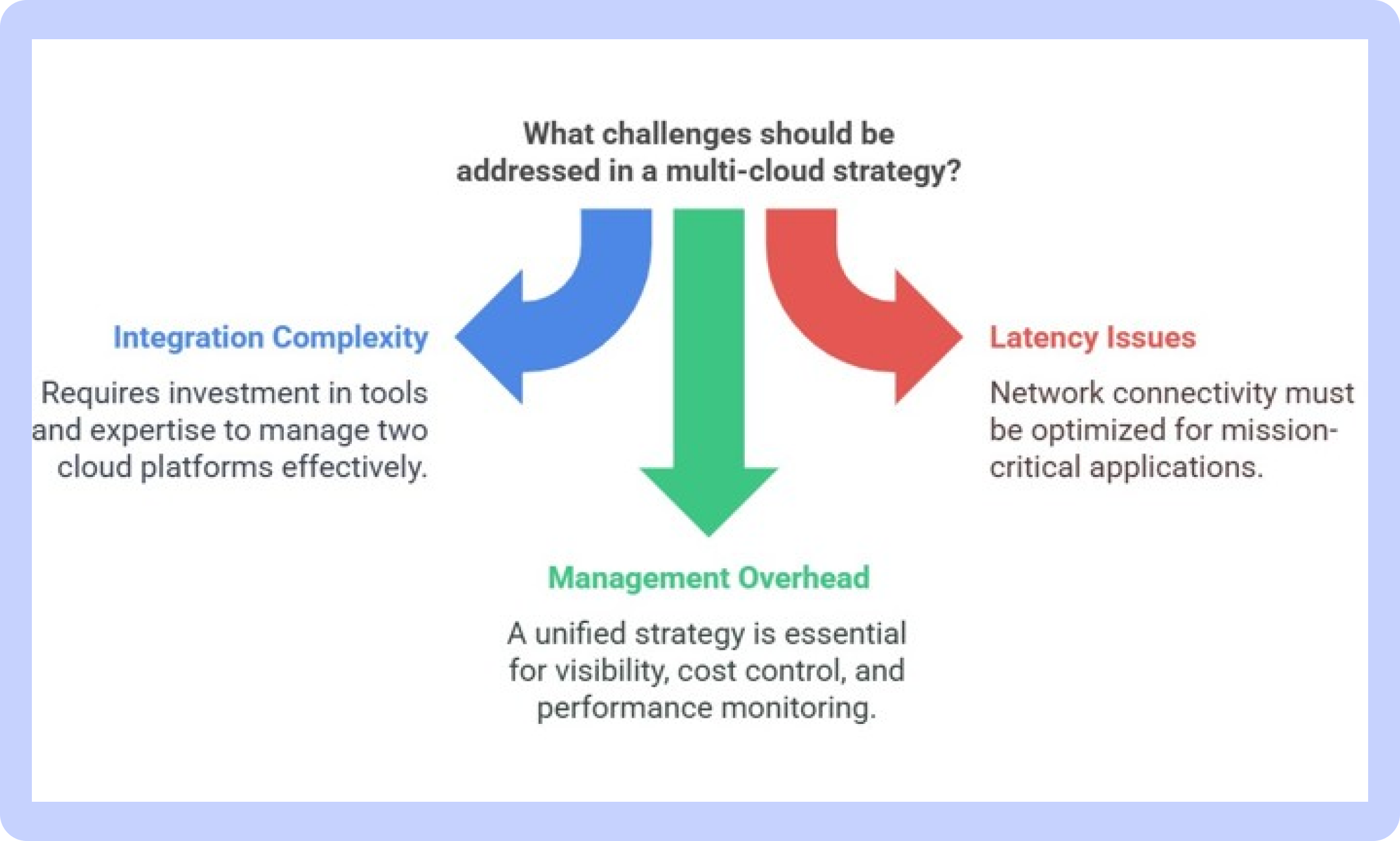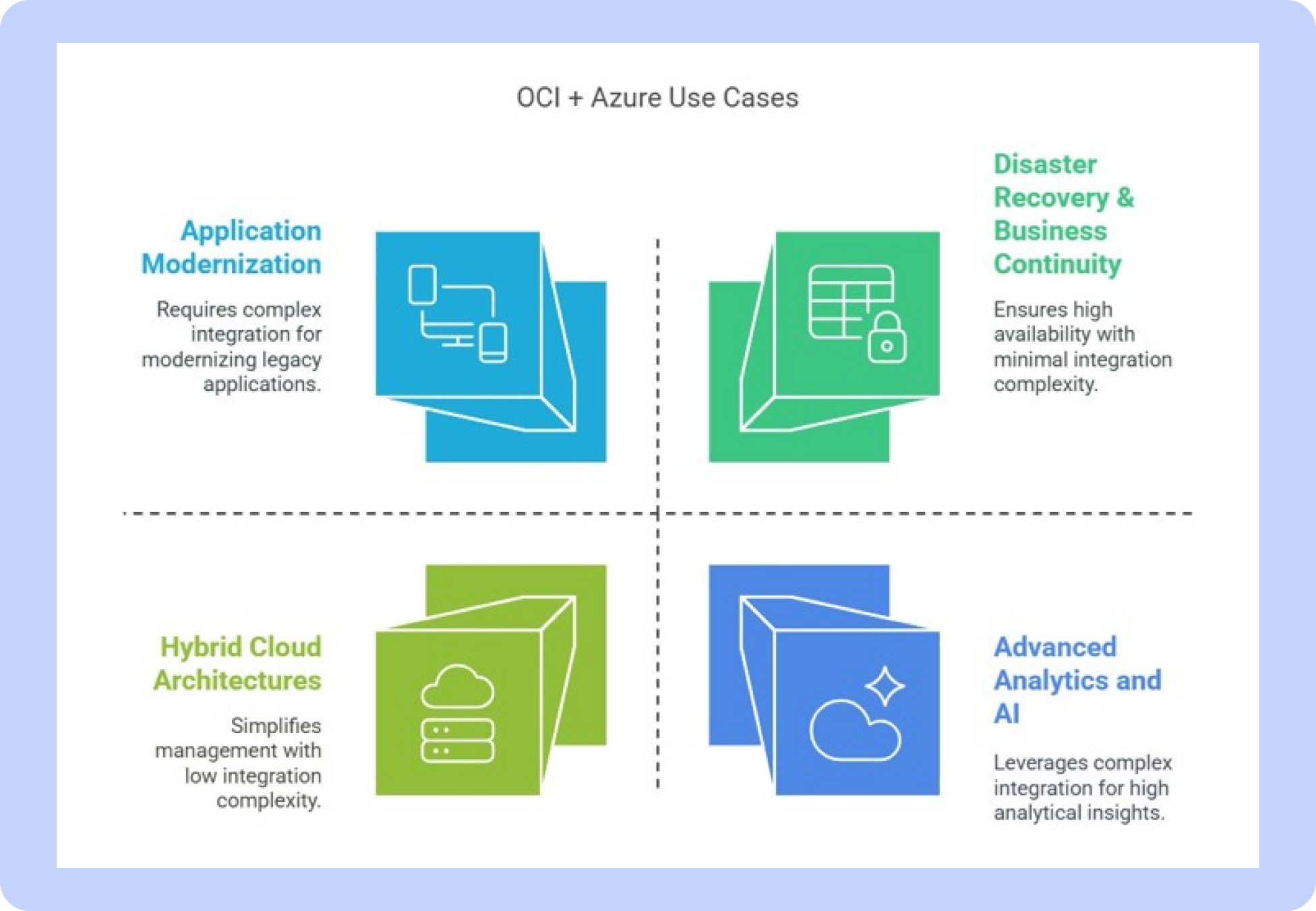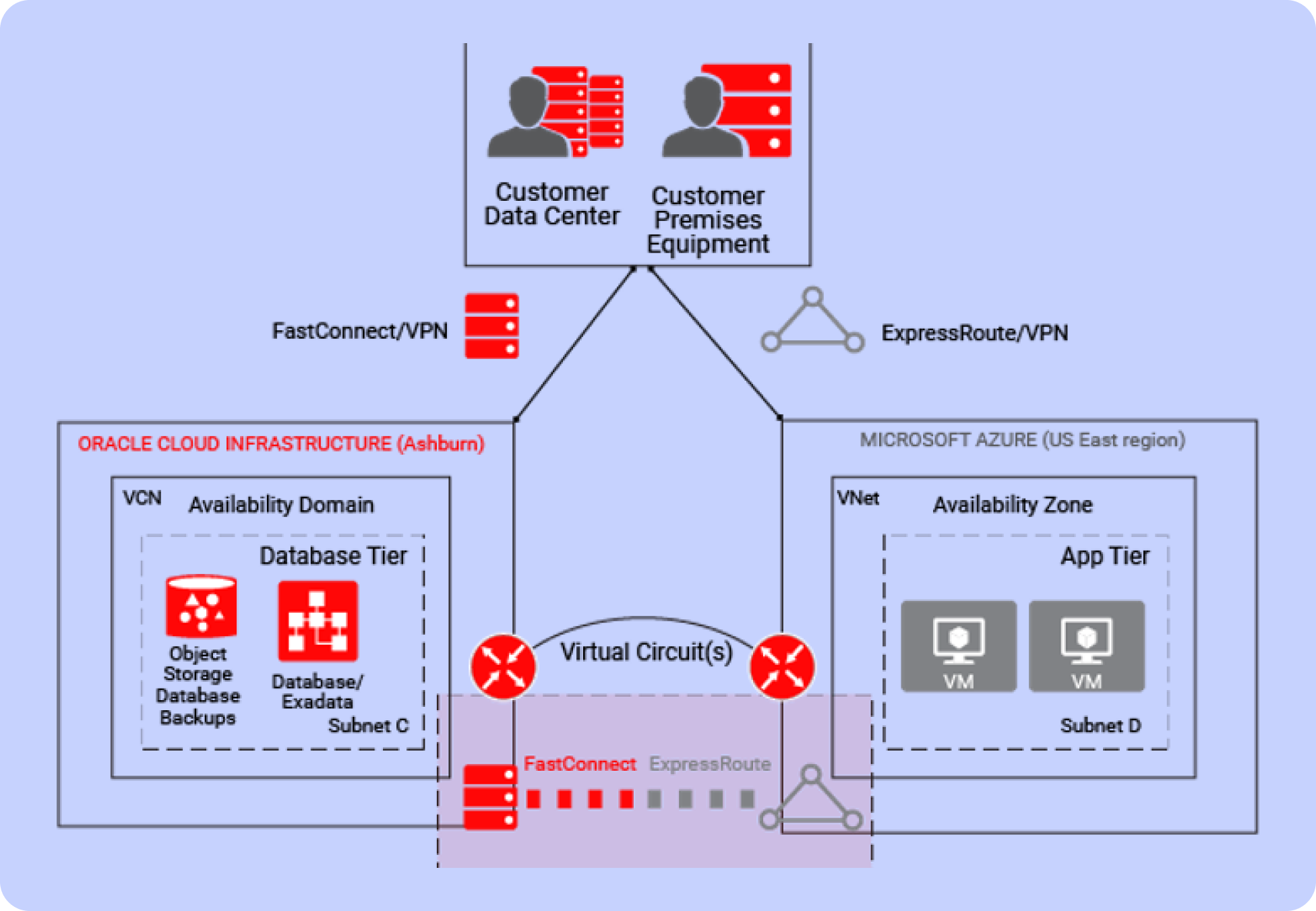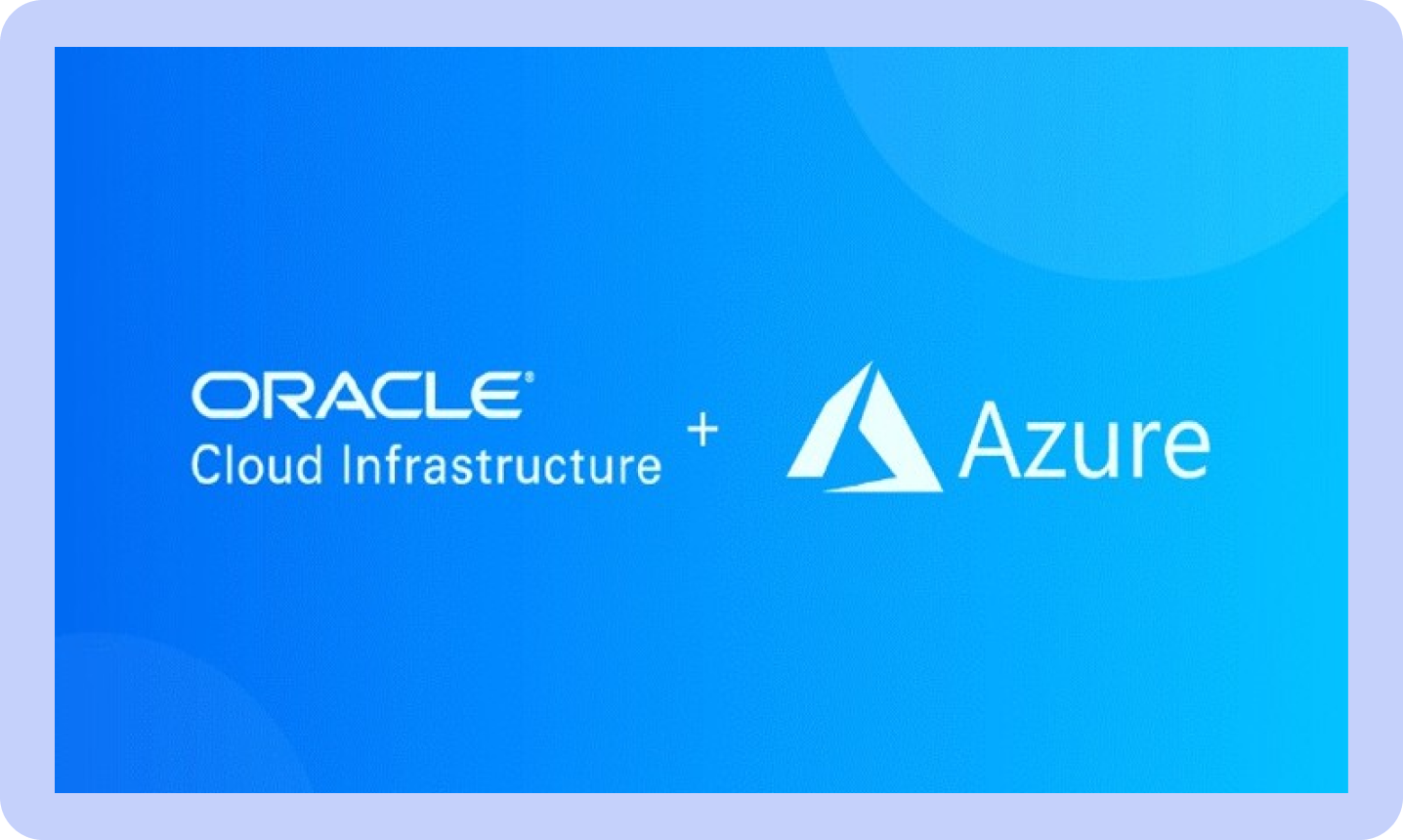Oracle Cloud Infrastructure + Microsoft Azure:
Unifying the Best of Both Worlds

Ashish Agnihotri
Data Analyst at Exaguru
🤯 Oracle Cloud Infrastructure + Microsoft Azure: Unifying the Best of Both Worlds
In today’s rapidly evolving digital landscape, enterprises are increasingly turning to multi-cloud strategies to gain flexibility, improve resilience, and access the best services each provider has to offer. By integrating Oracle Cloud Infrastructure (OCI) with Microsoft Azure, organizations can harness robust enterprise-grade solutions, optimize workloads, and drive innovation—all while mitigating vendor lock-in.

The Rise of Multi-Cloud Strategies
As businesses face complex challenges—from scaling applications to meeting stringent compliance requirements—the need for a multi-cloud approach becomes evident. Multi-cloud deployments enable organizations to:
- Leverage Best-of-Breed Services: Use OCI’s performance-optimized infrastructure alongside Azure’s comprehensive suite of AI, analytics, and enterprise application
- Improve Resilience and Redundancy: Distribute workloads across platforms to ensure high availability and disaster recovery.
- Enhance Flexibility: Adapt to changing business needs by selecting services that best match each specific workload.
Overview: OCI and Azure at a Glance : Oracle Cloud Infrastructure (OCI)
OCI is designed to support high-performance computing, data-intensive workloads, and enterprise applications. Its strengths include:
- Optimized Performance: With features such as bare-metal compute and high-speed networking, OCI is well-suited for demanding workloads.
- Database Integration: OCI seamlessly integrates with Oracle’s world-class databases and autonomous services, making it a top choice for mission-critical applications.
- Cost-Effective Scalability: Flexible pricing and powerful compute options allow businesses to scale efficiently.
Microsoft Azure
Azure is renowned for its vast global reach, diverse services, and integration with Microsoft’s enterprise ecosystem. Key benefits include:
- Comprehensive Cloud Services: From AI and machine learning to IoT and advanced analytics, Azure offers a broad spectrum of tools.
- Enterprise-Ready Security and Compliance: With strong support for regulatory standards and robust security features, Azure is trusted by organizations worldwide.
- Hybrid Cloud Excellence: Azure’s hybrid capabilities, such as Azure Arc and ExpressRoute, make it easier to integrate on-premises infrastructure with cloud services.

The Benefits of an OCI + Azure Integration
Combining OCI with Azure creates a powerful, multi-cloud environment that capitalizes on the strengths of both platforms:
- Enhanced Performance and Efficiency: Run high-performance workloads on OCI while leveraging Azure’s advanced analytics and AI services.
- Optimized Cost Management: Allocate workloads based on cost efficiency and performance needs, avoiding the limitations of a single provider.
- Improved Resilience: Utilize multi-region, multi-cloud setups to ensure continuous service availability and business continuity.
- Innovation through Integration: Connect data and applications across both clouds, enabling more robust solutions for analytics, machine learning, and digital transformation.

Integration Use Cases and Scenarios
Integration Use Cases and Scenarios
1- Disaster Recovery & Business Continuity:
Deploy critical applications on OCI and use Azure for backup, failover, and disaster recovery, ensuring minimal downtime during outages.
2- Hybrid Cloud Architectures:
Integrate on-premises systems with OCI’s compute and storage services, while using Azure’s hybrid tools (like Azure Arc) to manage and monitor distributed environments seamlessly.
3- Advanced Analytics and AI:
Leverage Oracle’s robust database capabilities on OCI to store and manage large datasets, then tap into Azure’s AI and analytics services to extract actionable insights..
4- Application Modernization:
Migrate legacy applications to OCI for enhanced performance while integrating with Azure’s developer tools and cloud-native services to build modern, scalable applications.

Best Practices for a Seamless Integration
When embarking on a multi-cloud journey with OCI and Azure, consider these best practices:
1- Strategic Planning:
Define clear objectives and map out which workloads are best suited for each platform. Conduct thorough assessments to determine the right balance.
2- Robust Networking:
MUse dedicated connections like Azure ExpressRoute and Oracle FastConnect to ensure secure, low-latency connectivity between clouds
3- Unified Identity Management:
Integrate identity and access management solutions (e.g., Azure Active Directory with Oracle Identity Cloud Service) to provide seamless authentication and authorization across platforms..
4- Consistent Security and Compliance:
Align security policies, conduct regular audits, and employ centralized monitoring to safeguard data and ensure compliance with industry standards.
4- Automation and Orchestration:
Utilize automation tools and APIs to manage resources efficiently, reduce manual intervention, and streamline deployments across both environments.

Challenges and Considerations
When embarking on a multi-cloud journey with OCI and Azure, consider these best practices:
1- Complexity of Integration:
Managing two cloud platforms can increase architectural complexity. Investing in the right tools and expertise is crucial.
2- Latency and Performance Issues:
Ensure that network connectivity is optimized to prevent latency issues, especially for mission-critical applications..
3- Management Overhead:
A unified management strategy is essential to maintain visibility, control costs, and monitor performance across clouds.

Looking Ahead: The Future of Multi-Cloud Innovation
In conclusion, leveraging OCI and Azure together opens up a world of possibilities, from enhancing performance and cost efficiency to ensuring robust disaster recovery and business continuity. By following best practices and carefully planning integration strategies, enterprises can truly harness the power of multi-cloud environments.

